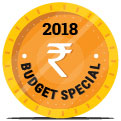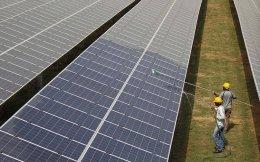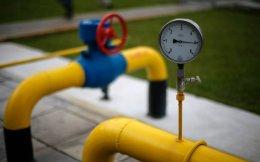 India needs to spend as much as $4.5 trillion to boost its creaky infrastructure by 2040 but will grapple with an investment gap of $526 billion in the next two decades, according to the Economic Survey 2018.
India needs to spend as much as $4.5 trillion to boost its creaky infrastructure by 2040 but will grapple with an investment gap of $526 billion in the next two decades, according to the Economic Survey 2018.
The survey, tabled in parliament on Monday ahead of the budget for 2018-19, India has historically suffered from a “massive under-investment†in the infrastructure sector, which changed only recently.
It pointed to three main reasons for the shortfall in infrastructure spending—the collapse of the public-private-partnership funding model, especially in power and telecom projects; the stressed balance sheets of private infrastructure companies; and issues related to land and forest clearances.
The funding gap can be met with help from institutions like National Infrastructure Investment Bank, and global institutions like Asian Infrastructure Investment Bank (AIIB) and the New Development Bank (erstwhile BRICS Bank).
The survey said that India’s 56 lakh km long road network continues to be the dominant mode of transport, with close to 60% of its total freight playing on roads. By contrast, railways are the most dominant carriers of goods in the US, China and Russia.
The need for spending more on roads is borne out by the fact that while India’s road length went up from 33.73 lakh km to 56.17 lakh km between 2001 and 2016, the vehicular traffic quadrupled from 55 million to 229 million.
“The composition of vehicles shows that the share of two wheelers and passenger cars, jeeps and taxis has increased on Indian roads while the share of public transport like buses and also goods vehicles contracted,†the survey noted.
These revelations and insights come even as India is implementing the Bharatmala scheme, under which the government plans to build nearly 83,700 km of roads and highways at an estimated cost of Rs 5.35 trillion.
On 22 January, VCCircle had noted how, in this year’s budget the roads sector could be in focus, although analysts believe that this could be a challenge because of the government’s ambitious expectations of private participation of the order of Rs 1 trillion, via the public-private-partnership
route, at a time when balance sheets are stretched.
The survey noted how the railways’ share has been declining in the total transport sector, forcing it to prioritise investments in important areas like the dedicated freight corridors, high-speed rail, high-capacity rolling stock, last-mile rail linkages, port connectivity, and attracting private and foreign direct investment.
Interestingly, the survey took note of how the telecom sector had been going through a “stress period†since “a new entrant disrupted the market†with low-cost data services, leading to a fall in revenue of incumbent players. The survey was referring to the entry of Reliance Jio Infocomm Ltd, which has not only forced other telecom operators to cut tariffs but has also pushed consolidation in the telecom industry. The telecom industry is reeling under a massive debt burden of the order of Rs 8 trillion.
“The crisis has also severely impacted investors, lenders, partners and vendors of these telecom companies,†the survey said, without actually naming Jio or any of the other telecom companies.
Talking of the civil aviation sector, the survey noted how India had made “considerable progress†and was now the third-largest and the fastest-growing domestic aviation market in the world in terms of number of domestic tickets sold.
“In 2016-17, annual growth in domestic passenger departures was 23.5% as compared to 3.3% in the US and 10.7% in China,†the survey said.
Domestic passenger traffic registered a compound annual growth rate (CAGR) of 9.89% during 2007-08 to 2016-17. In 2017-18 (April-September), domestic airlines carried 57.5 million passengers, recording a growth rate of 16% over the corresponding previous year period. Scheduled Indian and foreign carriers carried 29.2 million passengers to and from India, and showed a growth rate of 9% in 2017-18 (April-September) over the corresponding period a year earlier.
Separately, the survey noted how aggressive bidding by telecom and energy companies had exacerbated the menace of stressed balance sheets, leading to a “winner’s curseâ€.
“In the case of spectrum, coal and renewables, auctions may have led to a winner’s curse, whereby firms overbid for assets, leading to adverse consequences in each of the sectors,†the survey noted.






